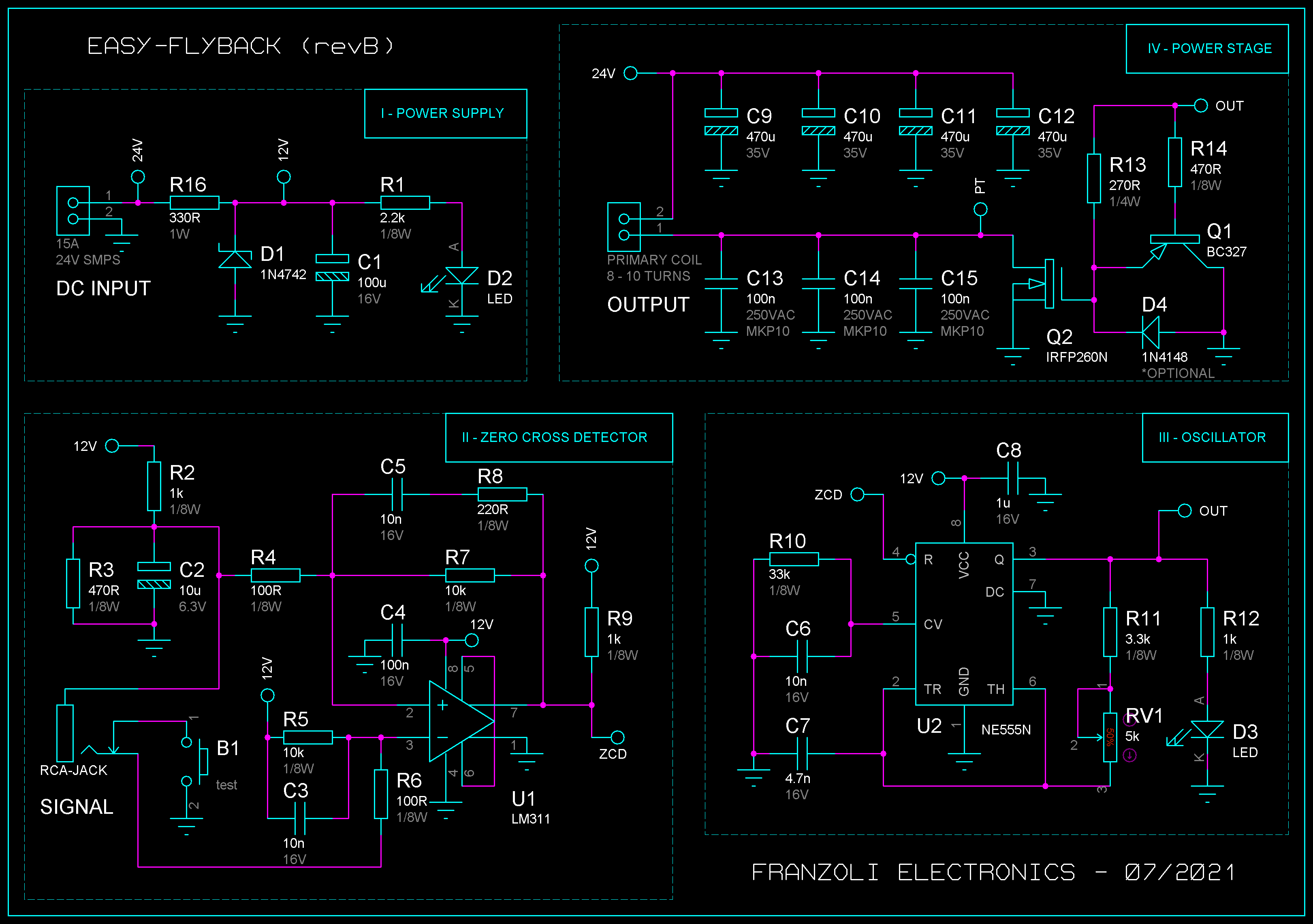- What is the purpose of R2, R3, and R5 in the zero crossing detector section?
R2 & R3 form a voltage divider from the +12V supply, which sets the threshold voltage for the comparator U1 pin 2. With the resistor values shown in the schematic, the voltage on C2 will be about 3.76V.
R5 pulls up the voltage at the inverting input of the comparator (U1 pin 3) to about +12V when there is no plug inserted at the RCA-JACK. In this case, the comparator (U1 pin 7) output will be low since V at +in is lower than the V at -in (U1 pin 2 is 3.7V, U1 pin 3 is +12V). If test switch B1 is pushed, then U1 pin 3 is pulled down to 0V via R6 (since R6 is only 100R compared to R5 at 10k), which causes the comparator output pin to change state to high impedance, causing U1 pin 7 to be pulled up to +12V via R9.
- Is it possible to use the zero crossing detector circuit at a lower voltage level, for example 5 V supply? What components must be changed?
The answer is: it depends. Which voltage are you referring to here, are you thinking of changing the +24V at the DC Input connector to +5V? Or just changing D1 to get 5V from the +24V? Or keeping the +12V and adding another voltage regulator to get +5V? Is this just for the Zero Cross Detector section, or do you want to change this voltage for the entire schematic including the Power Supply, Oscillator, and Power Stage?
If just for the ZCD stage, then the simplest approach without working through some circuit design would be to reduce all resistor values by a factor of 5/12, ie: multiply all values by 0.417, and select the nearest preferred value from that. Perhaps multiplying by 0.5 would be better. Leave the capacitor values unchanged.
If you want to convert the entire schematic to work from a +5V supply instead of a +12V supply then there will be significant changes required to all sections. The power section in particular will be more difficult since Q2 will have to change to a MOSFET that is fully ON when Vgs is just 5V rather than 12V - although these MOSFETs do exist, the range available is rather limited; MOSFETS that are fully ON at Vgs=12V are far more "standard".

